The Fortress of Nossa Senhora da Assunção
This fortress is where the History of Fortaleza started (read more here). The name means Fort of Our Lady of the Rising.
The fort was built by Dutch captain Matias Beck in 1649, and called Fort Schoonenborch. It was reclaimed by the Portuguese in 1654, and the name was changed to Fortaleza da Nossa Senhora de Assunção.
The fortress was refurbished many times, and since 1942 it has been the headquarter of the 10a. Military Region of the Brazilian Army.
The place is open for visitations, but there is very little publicity about this fact. To visit the fortress, approach the soldier who stands guard in front of the main entrance; he will direct you to the main office, and the person in charge will explain briefly what can be seen and will authorize the visit.
Actually, the space open for visitation is limited, because most of the fort is now occupied by the Army.
There is a museum inside the fort, dedicated to General Antonio de Sampaio, who was born in Ceará and became a hero in the War of Paraguay, in the 19th century; the General was buried in the fort, and some of his personal belongings (including uniforms, swords and weapons) are in exhibition.
In the outside yard, visitors can appreciate a view of the sea, like it was in the 17th century; original canons are exposed. There is also a statue of Martins Soares Moreno, another hero of Ceará.
View Larger Map
The fort is across the street from the Handicraft Market and the Cathedral of Fortaleza.
Below, some photos of the fort.
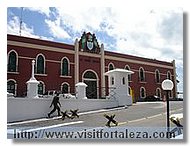
|
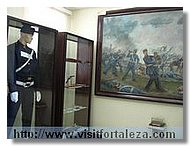
|
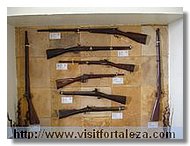
|
|
The photo to the left is the main entrance to the Fort; as it is an Army basis, it is permanently guarded by soldiers; ask the soldier on duty about how to proceed to visit the Fort. |
||
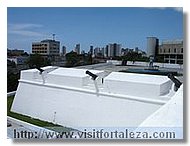
|
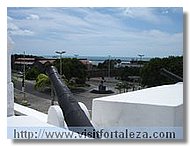
|
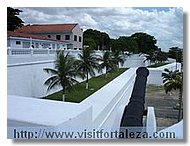
|
|
Main walls of the fortress; the thicker walls overlook the sea, where enemies came from. These walls were repainted several times, but structure and dimensions have been preserved over the centuries; the canons are also originals. |
||
